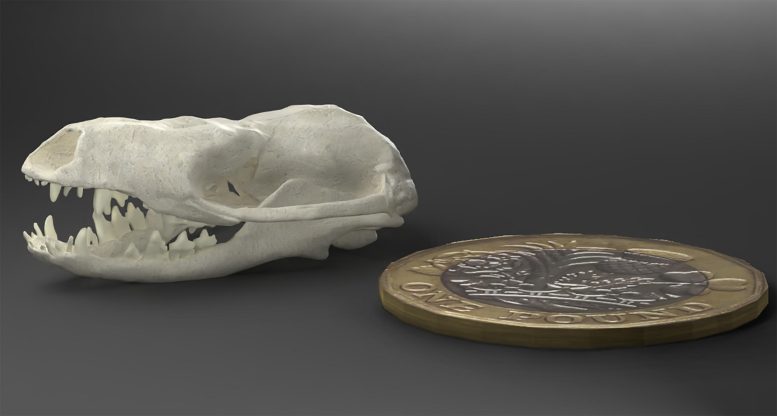
Digital skull model of the small-sized Jurassic mammal ancestor Hadrocodium wui. Credit: Dr. Stephan Lautenschlager, University of Birmingham
A recent study has uncovered the secret to the success of one of the most prosperous animal lineages — modern mammals. The key, according to the study, was to start out small and simple.
According to the study, the ancestors of modern mammals, over 300 million years ago, had a skull and lower jaw composed of multiple bones, much like many vertebrate groups, including fish and reptiles. This was a characteristic shared among animals with a backbone.
However, during evolution, the number of skull bones was successively reduced in early mammals around 150 to 100 million years ago.
Recently publishing their findings in the journal Communications Biology, an international team of paleontologists show how they used computer simulations and stress analyses to investigate the purpose of this skull simplification.
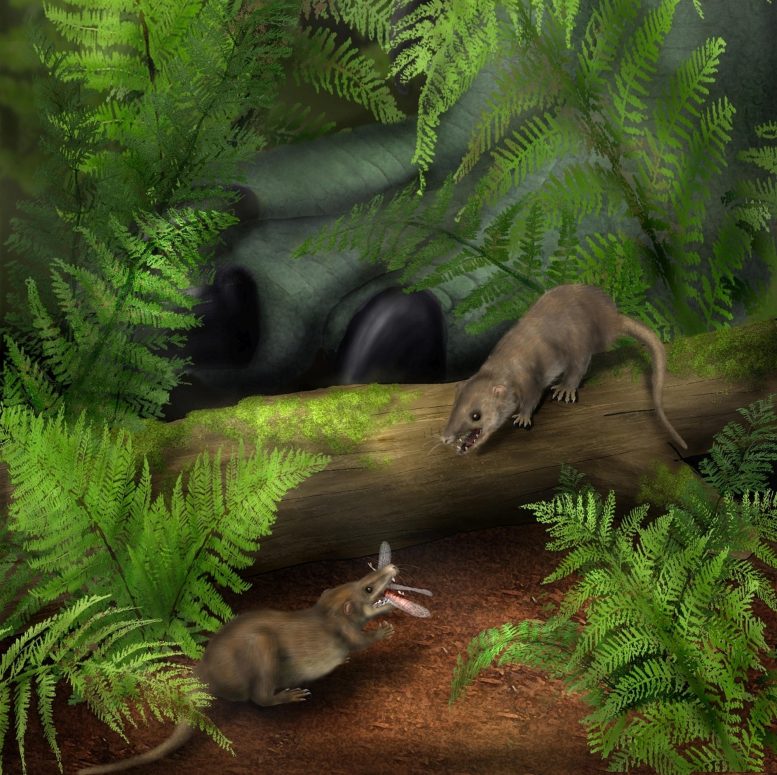
Artistic reconstruction of early mammal ancestors (species: Hadrocodium wui) shown hunting insect prey, illustrating how the adoption of an insectivorous diet and miniaturization played an important role in mammals. Credit: Dr. Stephan Lautenschlager, University of Birmingham
Their research demonstrates that reducing the number of skull bones did not lead to higher bite forces or increased skull strength as hypothesized for many decades. Instead, the team found that the skull shape of these early mammals redirected stresses during feeding in a more efficient way.
Lead-author Dr. Stephan Lautenschlager, Senior Lecturer for Palaeobiology at the University of Birmingham commented: “Reducing the number of bones led to a redistribution of stresses in the skull of early mammals. Stress was redirected from the part of the skull housing the brain to the margins of the skull during feeding, which may have allowed for an increase in brain size.
“Changes to skull structure combined with mammals becoming smaller are linked with a dietary switch to consuming insects – allowing the subsequent diversification of mammals which led to the development of the wide range of creatures that we see around us today.”
The study further demonstrated that alongside the reduction of skull bones, early mammals also became a lot smaller, some of which had a skull length of only 10-12 mm. This miniaturization considerably restricted the available food sources and early mammals had adapted to feeding mostly on insects.
This combination of small size, reduced number of skull bones, and feeding on new food sources, such as insects, allowed the ancestors of modern mammals to thrive in the shadows of the dinosaurs.
However, it was not until dinosaurs became extinct at the end of the Cretaceous, some 66 million years ago, that mammals had a chance to further diversify and reach the large range of body sizes seen today.
Reference: “Functional reorganisation of the cranial skeleton during the cynodont–mammaliaform transition” by Stephan Lautenschlager, Michael J. Fagan, Zhe-Xi Luo, Charlotte M. Bird, Pamela Gill and Emily J. Rayfield, 12 April 2023, Communications Biology.
DOI: 10.1038/s42003-023-04742-0

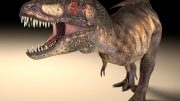

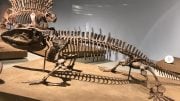
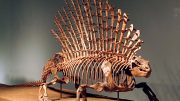
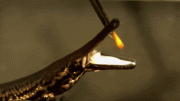
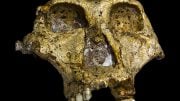
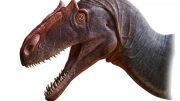
Be the first to comment on "New Study Uncovers Secret of Mammals’ Evolutionary Success"